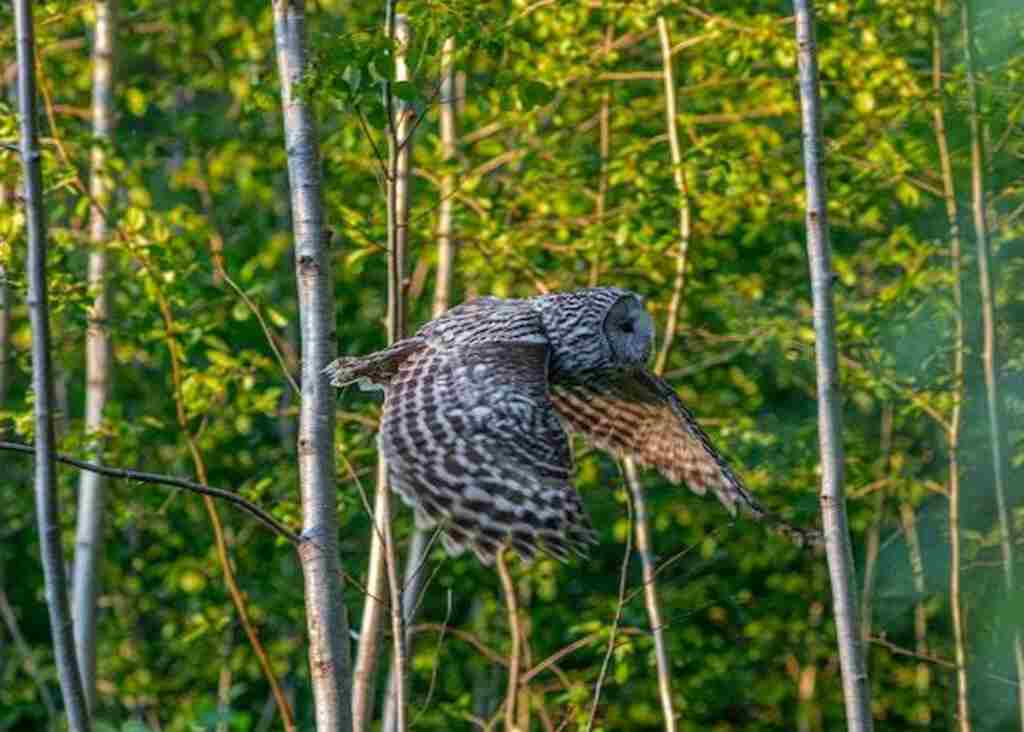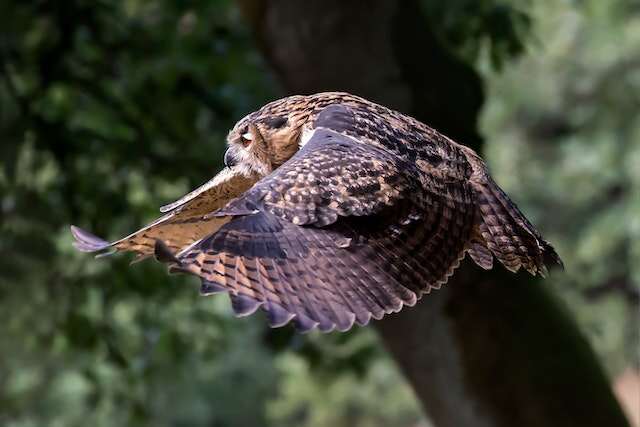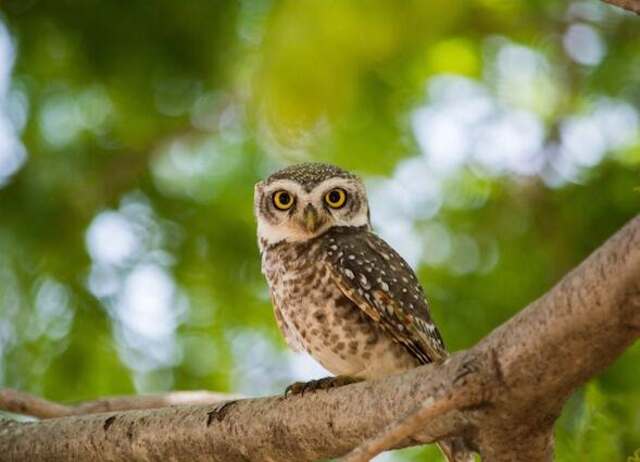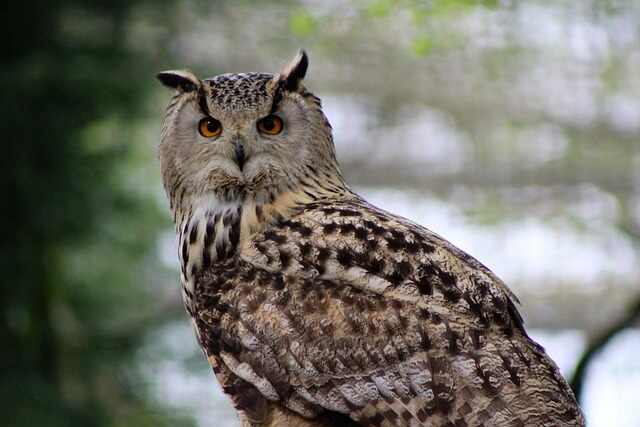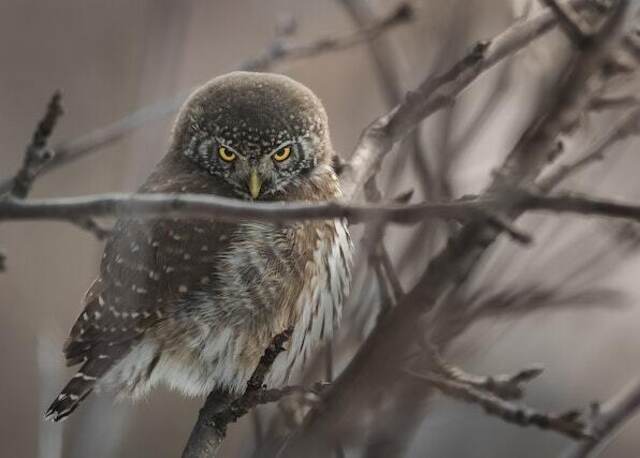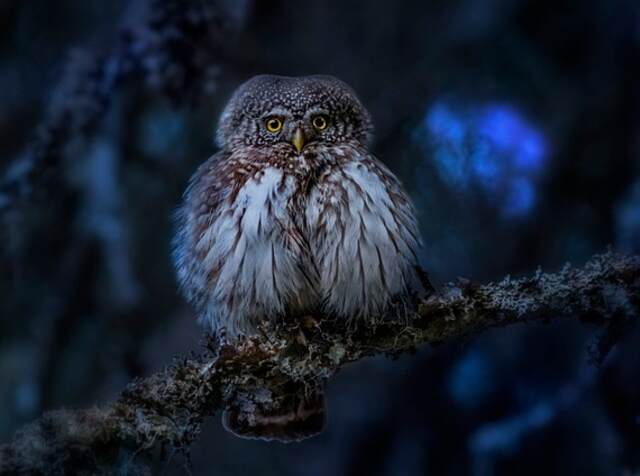Owls, with their enigmatic presence and silent flight, have long fascinated humans. These nocturnal birds of prey are masterful hunters, employing a combination of keen senses, stealth, and precision to catch their prey. Whether it’s the iconic hoot echoing through the night or the sight of their ghostly forms gliding effortlessly through the darkness, owls epitomize the art of hunting.
In this blog post, we will divee into the intricate methods and fascinating adaptations that make owls some of the most effective predators of the night. Discover how these remarkable creatures navigate their environment, detect their prey, and execute their hunts with unparalleled efficiency.
Table of Contents
The Fascinating World of Owls and Their Hunting Habits
Owls are one of the most fascinating creatures on Earth. Whether it’s their unique appearance, mysterious hoots, or nocturnal habits, there’s something captivating about these birds of prey.
But perhaps the most intriguing aspect of owls is how they hunt for their food. With incredible senses and adaptations, owls are some of the most successful hunters in the animal kingdom.
To understand how owls hunt, it’s important to know a little bit about them first. Owls belong to the order Strigiformes and are found all over the world except Antarctica.
They come in a variety of shapes and sizes, from small pygmy owls to large eagle owls. One thing they all have in common is their hunting skills.
Unlike many other birds that use brute force to catch their prey, owls have developed a range of techniques that allow them to hunt with precision and stealth.
From perching on tree branches to silently swooping down on unsuspecting prey, each type of owl has its own unique way of catching its dinner.
Adaptations for Nocturnal Life
One key reason why owls are such successful hunters is their ability to see in low light conditions. Owls’ eyes are large and round, which makes them perfect for collecting as much light as possible – similar to telescopes or binoculars used by humans at nighttime!
Plus, their eyes have more rod cells (special cells that detect light) than cone cells (cells used for color vision), which means they can see better in dim lighting conditions.
But it’s not just their eyesight that helps them navigate through darkness – they also have exceptional hearing abilities!
Owls’ ears are located at different positions on either side of their head, so they can hear sounds from multiple directions.
Plus, their asymmetric ear openings allow them to pinpoint the exact location of prey based on the time delay between sounds arriving at each ear. Cool, right?
| Adaptations for Nocturnal Life | Description |
|---|---|
| Large Eyes | Owls have large eyes that take up a significant portion of their skull. Their eyes are immobile, so they compensate by being able to rotate their heads up to 270 degrees to see in all directions. Their eyes are also designed to gather and process more light, which helps them see in low-light conditions. |
| Binocular Vision | Owls have binocular vision, which means their eyes work together to create a single, three-dimensional image. This helps them accurately judge distances and catch prey in the dark. |
| Keen Hearing | Owls have an acute sense of hearing, which allows them to locate prey in complete darkness. Their ears are asymmetrical, with one ear placed higher on the skull than the other. This helps them accurately pinpoint the location of sounds and determine their distance. |
| Silent Flight | Owls have special feathers on their wings that allow them to fly silently through the air. This is important for hunting, as it allows them to approach prey without being heard. |
| Camouflage | Many owl species have camouflage that helps them blend into their environment, making them difficult for predators and prey to spot. This can include mottled or streaked feathers that resemble tree bark or other natural objects. |
| Talons | Owls have sharp talons that they use to catch and kill prey. Their talons are strong and powerful, allowing them to grab onto prey and hold on tightly. |
| Nocturnal Behavior | Owls are primarily active at night, which helps them avoid competition with other diurnal predators and reduces the risk of being seen by potential predators. They roost during the day, often in trees or other protected locations. |
Hunting Techniques
Owls have adapted different hunting techniques that work best for their specific body size and prey type. Some species of owls prefer to perch on a high point and wait for prey to come within striking distance, while others fly silently through the sky searching for unsuspecting animals below.
Perching owls will use their keen senses to locate prey from a safe distance away before launching themselves off their perch to attack.
Flying owls will spiral down towards their target or fly low over the ground until they’re close enough to swoop up and snatch up dinner with their talons.
No matter what technique they use, one thing is certain: Owls are highly skilled hunters that take pride in being at the top of the food chain!
Owl Senses
The Hunt Begins with Owl Senses
As nocturnal predators, owls have evolved extraordinary sensory capabilities to help them hunt in the darkness of night. These sensory abilities are essential, as owls cannot rely on their eyesight alone.
Owls have an incredible sense of hearing, and it’s their primary tool for locating prey.
In fact, owls have the most extensive range of hearing among all birds due to their asymmetrical ear placement, allowing them to locate prey accurately and with incredible precision.
Owls can hear sounds ranging from 20 Hz to 12 kHz and can detect sounds as subtle as a mouse rustling in leaves or snow.
Their ears are so finely tuned that they can pinpoint the source of the sound within a fraction of a second, even in complete darkness. This allows them to hunt effectively even when there is little light available.
The Eyes Have It
While an owl’s sense of hearing is its most potent hunting tool, their eyesight is also exceptional. Owls have large forward-facing eyes that allow them to focus on prey with pinpoint accuracy.
They also have a high number of rod cells that make up their retina, which enables them to see well in low-light conditions.
What’s more impressive about an owl’s vision is that it has highly developed depth perception, which gives it a three-dimensional view of its surroundings, enabling it to judge distances accurately while hunting prey.
Smelling Prey
Though not as well known, some owls possess an acute sense of smell, used primarily for finding food when other senses fail.
However, this isn’t true for all owl species since most do not rely on smell during hunting except when trying to locate carrion, which means they could go without food for days if necessary.
The combination of these senses makes owls one of nature’s most formidable predators.
Their senses, especially their hearing, have adapted to allow them to hunt effectively even in complete darkness. Without these sensory capabilities, an owl would not survive long in the wild.
Hunting Techniques
Perching, Flying, Stealth, and Sit-and-Wait
Owls are known for their exceptional hunting abilities and employ a variety of techniques to catch their prey. The four main techniques owls use for hunting include perching, flying, stealth, and sit-and-wait.
The perching technique involves waiting on a high perch, such as a tree branch or fence post, and silently gliding down towards prey when spotted. Owls also use stealth to fly in complete silence and go unnoticed by prey.
Another technique that owls use for hunting involves sit-and-wait, where the owl sits and waits for prey to come within striking distance. This technique is most effective when hunting small mammals like rodents or insects that tend to stay close to the ground.
Owls also employ the flying technique when hunting larger prey that are too big or too fast for them to catch while perched.
In addition to these methods, owls also use camouflage to blend in with their environment and go unnoticed by prey. Some owl species hunt during the day or in open areas, while others hunt at night or in wooded areas.
Owls can be highly effective hunters due to their unique adaptations, which include sharp talons with four toes, three pointing forward and one pointing backward, for added grip when swooping in for the kill.
Overall, each hunting technique used by owls is best suited for different types of prey and environments.
| Hunting Technique | Description | Prey Type | Best Environment |
|---|---|---|---|
| Perching | Waiting on a high perch and silently gliding towards prey | Small mammals, birds | Wooded areas, open spaces |
| Flying | Pursuing prey while in flight | Large mammals, birds | Open spaces |
| Stealth | Flying silently and unnoticed by prey | Small mammals, birds | Any environment |
| Sit-and-Wait | Sitting and waiting for prey to come within striking distance | Small mammals, insects | Ground level in wooded areas |
| Camouflage | Blending in with environment and going unnoticed by prey | Any prey type | Any environment |
Note: Owls may use a combination of these hunting techniques depending on the situation.
Prey Selection
Owls are predators that hunt a wide variety of prey, from insects to small mammals. But how do they decide which prey to go after? In general, owls choose their prey based on three main factors: size, behavior, and habitat.
Size is an important consideration for owls because they have to be able to physically handle their prey. Most owl species are relatively small compared to some of the animals they hunt, so they typically target animals that are smaller than themselves.
For example, a great horned owl might go after rabbits or squirrels, while a barn owl might target mice or voles. Behavior is another important factor in prey selection.
Different animals have different behaviors that make them more or less vulnerable to predation by owls. For example, some animals are more active during the day and less aware of potential threats at night when owls hunt.
Others may be more solitary or easier to catch because they move slowly or don’t have effective defenses. Habitat plays a role in what types of prey are available for an owl to hunt.
Different species of owls live in different types of environments and may specialize in hunting certain types of prey that are found in those environments.
For example, snowy owls live in Arctic regions, where they primarily hunt lemmings and other small rodents that live in snowy tundra habitats.
Different Owl Species Have Different Prey Preferences
Although there is some overlap between the types of prey hunted by different owl species, each species tends to have its own preferences based on its size and habitat. Some examples include:
- Barn Owls: These medium-sized owls prefer to eat small mammals such as mice and voles.
- Great Horned Owls: These large owls will eat almost anything they can catch, but their preferred targets include rabbits and hares.
- Screech Owls: These small owls hunt insects, small mammals, and birds.
- Snowy Owls: These Arctic owls primarily hunt lemmings and other small rodents, but they will also eat birds and fish if they are available. Understanding these preferences can help conservationists understand how different owl species fit into their ecosystems and how changes to those ecosystems could impact owl populations.
Silent Flight
The Sound of Silence
Have you ever heard an owl fly? Probably not. That’s because owls are one of the few birds that can fly silently. They do this by adapting their feathers to muffle the sound of air rushing past them.
The feathers on their wings have serrated edges that break up turbulence, reducing noise and giving the owl a stealthy advantage when hunting prey.
Owls also have specialized flight feathers that are softer and more flexible than other birds’ feathers, which helps to absorb sound and reduce noise as they move through the air.
This allows them to sneak up on prey without alerting them to their presence.
Adaptations for Silent Flight
To achieve silent flight, owls have evolved several adaptations beyond just feather structure. For example, they have large wings relative to their body size, which allows them to flit from branch to branch with minimal effort or sound.
Furthermore, they have soft-edged primary wing feathers that reduce high-frequency turbulence noise during flapping flight.
Owls also take advantage of some physics in achieving silent flight: they employ a unique wing-cambering mechanism which redistributes lift over the entire length of their wings in order to control airflow more effectively and reduce turbulence.
This reduces both mechanical noises from feather movement and aerodynamic noises from turbulent flow around the wings.
All these adaptations add up to make owls some of the most efficiently silent hunters in nature – allowing them to sneak up on prey undetected and take it down with ease using their impressive talons or sharp beaks!
Killing Techniques
Claws: The Lethal Weapons of Owls
Owls have razor-sharp claws, called talons, which they use to catch and kill their prey. These talons are strong enough to pierce through the flesh of their prey and hold onto it tightly.
When an owl spots its prey, it swoops down with lightning-fast speed and uses its talons to grab the prey by its head or body. The owl then uses its sharp beak to deliver the deadly blow.
The talons of an owl are designed for different types of prey. For example, smaller owls have sharper talons that allow them to catch small rodents and insects easily.
Larger owls have more massive talons that enable them to catch larger animals like rabbits or squirrels. Owls also use their claws for self-defense against predators, as they can attack with lightning speed if threatened.
Killing Techniques – Claws and Beak
| Technique | Description |
|---|---|
| Claws | Owls use their sharp talons to grab their prey, pierce its flesh, and hold onto it tightly. Different-sized owls have different-shaped talons for different prey. |
| Beak | The hooked shape of an owl’s beak allows it to tear through flesh and break bones. Owls use their beaks to catch smaller prey and also during the digestion process. |
The Beak: A Powerful Tool for Killing Prey
While owls primarily use their claws for hunting, they also have a powerful beak that can deliver fatal blows to their prey. The hooked shape of the beak allows them to grab onto their victims and tear through flesh or break bones with ease.
It’s a useful tool when hunting smaller animals like mice or birds. Owls also use their beaks during the digestion process as well.
They swallow their prey whole and then regurgitate what they cannot digest in the form of pellets. These pellets consist mainly of fur, feathers, and bones from the animal eaten.
| Aspect | Description |
|---|---|
| Function | The beak is used for grabbing and killing prey, as well as for tearing through flesh and breaking bones. |
| Shape | The hooked shape of the beak allows owls to grab onto their prey and tear through flesh or break bones with ease. |
| Hunting | While owls primarily use their claws for hunting, the beak is a useful tool when hunting smaller animals like mice or birds. |
| Digestion | Owls use their beaks during the digestion process by swallowing their prey whole and regurgitating what they cannot digest in the form of pellets. These pellets consist mainly of fur, feathers, and bones from the animal eaten. |
Suffocation: An Effective Method Used by Owls
Suffocation is another common technique used by owls when hunting larger animals like rabbits or squirrels. They usually suffocate these animals by crushing their windpipe with one of their feet while holding onto them tightly.
This method is quick and efficient and allows the owl to kill its prey without causing much noise or struggle. Owls are fascinating creatures that have evolved specific skills and techniques for hunting.
Their lethal combination of talons, beak, and suffocation makes them one of the deadliest predators in the animal kingdom. Whether it’s catching a small mouse or a large rabbit, these birds of prey are well-equipped to take down their prey with ease.
Killing Techniques – Suffocation
| Technique | Description |
|---|---|
| Suffocation | Owls use suffocation to kill larger prey like rabbits or squirrels. They crush the animal’s windpipe with one foot while holding onto it with the other, causing a quick death. This method is quiet and efficient. |
The Digestion Process of Owls: From Swallowing to Excretion
How Do Owls Digest Food?
The digestive process of owls is fascinating, just like their hunting habits. Owls are carnivores and consume small mammals, insects, reptiles, and even other birds.
Once they have captured their prey, they swallow it whole or in large chunks. The digestion process starts with the owls’ beak and talons breaking down the food into smaller pieces.
The stomach acid helps in breaking down the food further into a soupy mixture known as “chyme.” Once the chyme has been formed, it passes through the owl’s digestive system.
The Process from Swallowing to Excretion
Once swallowed, the owl’s food rapidly enters its proventriculus which is an extension of its esophagus. The proventriculus is part of its glandular stomach, where enzymes start to break down proteins in preparation for later digestion.
Once the proteins have been broken down into smaller peptides and amino acids within the proventriculus region of their stomachs (also known as glandular stomach), the fragments move on towards another part called gizzard.
The gizzard is a muscular organ that grinds up indigestible parts such as bones or fur mechanically by muscular contractions. Here it is mixed with digestive enzymes from pancreas before moving onto another chamber (intestine) for absorption of nutrients where most absorption occurs.
After passing through this process for a few hours, what remains after digestion are indigestible parts such as feathers, fur or bones that cannot be absorbed by an owl’s body then packaged up into a pellet called castings which will be regurgitated later on mostly during daytime when they are not actively hunting.
An owl’s digestive system has evolved over millions of years to perfectly fit their hunting and survival needs. The process of digesting prey starts with the breaking down of food into smaller pieces in their beak and talons, followed by the breakdown of proteins in the proventriculus part of their stomachs.
After this, the ground-up mixture moves into the intestine for nutrient absorption before finally producing a pellet that is regurgitated. The next time you see an owl hunting at night, take a moment to appreciate how its digestive system allows it to survive and thrive in the wild.
| Stage of Process | Description |
|---|---|
| Swallowing | After catching prey with its sharp talons, an owl uses its strong beak to tear off bite-sized chunks of meat. It then uses its tongue to push the food to the back of its mouth, where it’s swallowed whole. |
| Digestion | Once swallowed, the food travels down the owl’s esophagus and into its crop, which is a muscular pouch where it’s stored temporarily. From there, it enters the stomach, which contains powerful acids and enzymes that break down the food into smaller pieces. |
| Absorption | The partially digested food then moves into the small intestine, where nutrients are absorbed into the bloodstream. The waste products are passed into the large intestine. |
| Excretion | The waste products are then passed out of the owl’s body through the cloaca, which is a single opening used for both excretion and reproduction. The solid waste, in the form of pellets, is regurgitated from the gizzard and ejected from the cloaca. |
Conclusion
Recap on what was discussed
Throughout this article, we’ve delved into the fascinating world of owl hunting habits. We learned about their highly adapted senses used for hunting in the dark, their two main hunting techniques, prey selection and how they kill their prey using claws, beak or suffocation.
Additionally, we discussed how owls fly silently to avoid alerting prey to their presence and the digestion process.
Final thoughts on owl hunting habits
Owls are impressive creatures with an array of amazing adaptations that make them successful hunters. The combination of their incredible senses and silent flight make them deadly predators in the dark of night.
It’s truly remarkable to think about how these birds have evolved over time to become such efficient predators.
However, it’s important to remember that while they may be skilled hunters, they are still an important part of our ecosystem that helps control pest populations.
Owls are also a symbol of wisdom across many cultures and can inspire us to appreciate the beauty and complexity of nature around us.
By understanding more about how do owls hunt we can gain a deeper appreciation for these majestic creatures and the intricate workings of nature itself.
Studying animal behavior is one way we can learn more about our world and help protect it for future generations.

